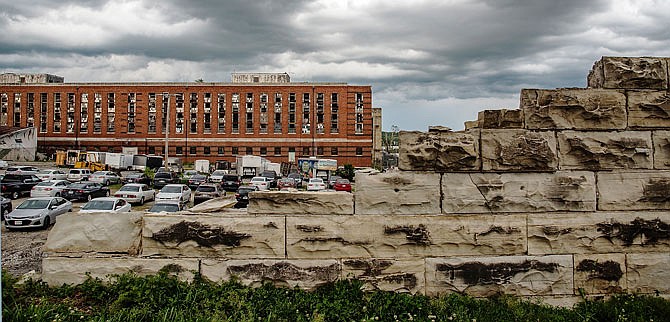As the Jefferson City community continues to rebuild following the May 22 tornado, it's important residents look for ways to preserve its history, something the city's new Historic Preservation Plan will potentially help with.
The Jefferson City Historic Preservation Commission held a special meeting Tuesday evening to discuss the city's draft Historic Preservation Plan, created by Heritage Strategies, LLC. The plan concentrates on the "community's unique issues and opportunities" and helps guide historic preservation in Jefferson City, according to the city's website.
The five main goals of the plan are:
- Reinforce the role Jefferson City's historic core plays in the city's identity and economy,
- Revitalize the city's historic commercial centers and residential neighborhoods,
- Connect Jefferson City's historic core to outlying suburban neighborhoods,
- Stimulate private investment in revitalizing historic areas through the city's historic preservation, neighborhood services and planning programs, and
- Engage residents and visitors.
During her presentation, consultant Elizabeth Watson, with Heritage Strategies, LLC, provided examples to help achieve the five goals. One of her top suggestions was the city create design guidelines for historic neighborhoods and historic commercial centers.
The guidelines would not be requirements but set up more like a manual that illustrates information about historic preservation, Watson said. She added this manual will be particularly important as people rebuild in areas impacted by the twister.
Commissioner Donna Deetz, who is also the Historic City of Jefferson president, agreed one of the most important recommendations from the Historic Preservation Plan is the design guideline manual.
"Most of us who have been there and done these things literally learned as we were going, and I think going forth and encouraging development in the Capitol Avenue area and all of the buildings coming down and (being rebuilt), there's got to be somebody or something there to help," she said.
The Historic Preservation Plan would have been important even if an EF-3 tornado had not ripped through Jefferson City, commission chair Mary Schantz said, but the tornado aftermath "demonstrates to us how valuable our historic neighborhoods are."
While the Capitol Avenue Neighborhood Conservation Overlay District outlines design requirements for the East Capitol Avenue area, she added, the Jackson Street area does not have these protections.
"In some areas like Capitol Avenue, we have an overlay district and those houses that come down and are rebuilt or rehabbed will have guidelines so that the new construction will fit the neighborhood," she said. "It's unfortunate that we don't have that in the entire tornado district, but I think this will help bring an awareness to people as they begin rebuilding their homes or build new homes of the importance of trying to have a neighborhood that has character and charm that is historic, even if the building itself has to be redone or torn down and rebuilt."
Encouraging more historic preservation in neighborhoods will also be key as the city moves forward with the Historic Preservation Plan, Watson said. She suggested the city continue to survey historic neighborhoods throughout Jefferson City and nominate them to the National Register of Historic Places, but also push for historic districts such as local historic districts or neighborhood conservation overlay districts.
The draft plan suggests the city designate Moreau Drive and the Capitol Avenue Historic District as local historic districts, the highest level of protection in Jefferson City. The city could also encourage neighborhood conservation overlay districts in historic neighborhoods throughout Old Town District - bounded by Boonville and Moreau roads, Stadium Boulevard and the Missouri River.
Schantz said she believes one of the commission's top priorities will be engaging more with the community to help encourage historic preservation and its importance. The commission should also become more active in design review, partnering with local historic preservation groups and working with other city commissions to spur preservation.
"I think it was demonstrated by our consultants that historic preservation is an economic asset; it is not a deterrent," she said. "To have an area where people know that the homes in their neighborhood are going to be preserved and keep the characteristics and charm alive will be really a big benefit."
Residents can view the plan at jeffersoncitymo.gov/live_play/history_heritage/historic_preservation.php.
Individuals can also email comments to [email protected] or mail them to the Jefferson City Department of Planning and Protective Services at 320 E. McCarty St.
Watson said she hopes to finalize the Historic Preservation Plan in August.
In December, the Jefferson City Council approved a $30,000 contract with Heritage Strategies, LLC. The State Historic Preservation Office will pay 50 percent of the contract cost, Jefferson City Neighborhood Services Manager Jayme Abbott previously said.

